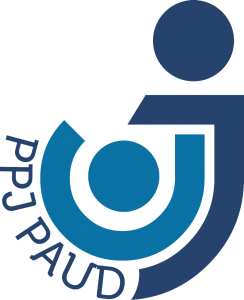Development of snakes and ladders game (disaster response) as earthquake mitigation for children
DOI:
https://doi.org/10.26555/jecce.v3i2.3111Keywords:
Snakes and Ladders Game, Earthquake Disaster Mitigation, Early ChildhoodAbstract
This study aims to produce of snakes and ladders game with feasible to increase understanding of children related to earthquake disaster mitigation. Snakes and ladders game will be applied to children aged 5-6 years in Palu city. This research is a research and development according to Borg and Gall. Data collection techniques using observation, interviews and questionnaries. Data analysis in the form of quantitative descriptive. The results showed that the assessment of the material validators get an average of 3.63, media validators get an average of 3.8, and disaster validators get an average of 3.75 (feasible category). In the initial field trials, it averaged persentage 78% and was included in the feasible category. Operational field trials get an average persentage of 87% included in the feasible category. Comparative study results obtained sig. (2-tailed) of 0,000 <0.05, it can be concluded that Ha is accepted, which means that "there is a significant difference" between the average post-test results of the control group and the experimental group. The results obtained after applying the snake and ladder game, children can understand and carry out self-rescue activities when simulating an earthquake disaster.
References
Anderson, A. W. (2005). Bringing Children into Focus on the Social Science Disaster Research Agenda. International Journal of Mass Emergencies and Disasters, 23(3), 159–175.
Cox, R. S., Scannell, L., Heykoop, C., Tobin-Gurley, J., & Peek, L. (2017). Understanding youth disaster recovery: The vital role of people, places, and activities. International Journal of Disaster Risk Reduction, 22, 249–256. doi.org/10.1016/j.ijdrr.2017.03.011
Fletcher, S., Cox, R. S., Scannell, L., Cheryl, H., Peek, L., & Tobin-Gurley, J. (2016). Youth Creating Disaster Recovery and Resilience: A Multi-Site Arts-Based Youth Engagement Research Project. Children, Youth and Environments, 26(1), 148–163. https://doi.org/doi.org/10.7721/chilyoutenvi.26.1.0148
Freeman, C., Nairn, K., & Gollop, M. (2015). Disaster impact and recovery: what children and young people can tell us. KÅtuitui: New Zealand Journal of Social Sciences Online, 10(2), 103–115. https://doi.org/10.1080/1177083X.2015.1066400
Gredler, M. E. (2019). Learning and Instruction Teori dan Aplikasi Edisi Keenam. 170–172.
Lopez, Y., Hayden, J., Cologon, K., & Hadley, F. (2012). Child participation and disaster risk reduction. International Journal of Early Years Education, 20(3), 300–308. https://doi.org/10.1080/09669760.2012.716712
Midtbust, Liv Gunvor Hove Dyregrov, A., & Djup, H. W. (2018). Communicating with children and adolescentsabout the risk of natural disasters. European Journal of Psychotraumatology, 9(2), 1–10. https://doi.org/10.1080/20008198.2018.1429771
Mudavanhu, C., Manyena, S. B., Collins, A. E., Bongo, P., Mavhura, E., & Manatsa, D. (2015). Taking Children’s Voices in Disaster Risk Reduction a Step Forward. International Journal of Disaster Risk Science, 6(3), 267–281. https://doi.org/10.1007/s13753-015-0060-7
Olson, D. K., Scheller, A., & Wey, A. (2010). Using gaming simulation to evaluate bioterrorism and emergency readiness training. Journal of Public Health Management and Practice, 20(5), 468–477. https://doi.org/10.1177/003335491012500316
Peek, L., & Fothergill, A. (2014). Post-Disaster Decline: Understanding Children’s Vulnerability Before, During, and After Katrina. A Quarterly Technical Assistance Journal on Disaster Behavioral Health, 10(3), 1–4.
Pfefferbaum, B., Pfefferbaum, R. L., & Van Horn, R. L. (2018). Involving children in disaster risk reduction: the importance of participation. European Journal of Psychotraumatology, 9(2), 1–6. https://doi.org/10.1080/20008198.2018.1425577
Purnamawati, I. G. A. A. (2020). Pengaruh Pemberian Edukasi dengan Media Permainan Ular Tangga terhadap Kesiapsiagaan Anak Sekolah Dasar dalam Menghadapi Bencana Gempa Bumi. Poltekkes Kemenkes Denpasar.
Rifa, I. (2012). Koleksi Games Edukatif di Dalam dan Luar Sekolah (1st ed.). Flashbooks.
Ronan, K. R., Haynes, K., Towers, B., Alisic, E., Ireland, N., Amri, A., Davie, S., & Petal, M. (2016). Child-centred disaster risk reduction: Can disaster resilience programs reduce risk and increase the resilience of children and households? Australian Journal of Emergency Management, 31(3), 49–58. (DOI TIDAK DITEMUKAN)
Steward, D., & Wan, T. (2007). The role of simulation and modeling in disaster management. Journal of Medical Systems, 31(2), 125–130. https://doi.org/10.1007/s10916-006-9047-7
Syaodih Sukmadinata, N. (2007). Metode Penelitian Pendidikan. Bandung: Remaja Rosda Karya, 169–170.
Vineeta, T., & Pathranarakul, P. (2019). Gender inclusiveness in disaster risk governance for sustainable recovery of 2015 Gorkha Earthquake, Nepal. International Journal of Disaster Risk Reduction, 34, 209–219. https://doi.org/10.1016/j.ijdrr.2018.11.019
Tuladhar, G., Yatabe, R., Dahal, R. K., & Bhandary, N. P. (2014). Knowledge of disaster risk reduction among school students in Nepal. Geomatics, Natural Hazards and Risk, 5(4), 190–207. https://doi.org/10.1080/19475705.2013.809556
Utami, S. D., & Mustari, H. (2020). PERUT SINCAN (Snakes and Ladders Game of Disaster Mitigation) as a Disaster Education Learning Medium. Jurnal UNS : Social, Humanities, and Education Studies (SHEs): Conference Series, 3(1), 76–82. https://doi.org/10.20961/shes.v3i1.45015
Widowati, E., Hendriyani, R., & Nugroho, E. (2019). Development of Child Friendly Educative Game Model As Method to Prevent Violence Against Children in School. KnE Social Sciences, 3(18), 167–176. https://doi.org/10.18502/kss.v3i18.4710
Widowati, E., Sugiharto, S., Wahyuningsih, A. S., Husodo, A. H., & Istiono, W. (2020). Transformation Prospect of a Non Disaster-Prepared-School in Implementing Management of Child Safety Education. Unnes Journal of Public Health, 9(1), 34–42. https://doi.org/10.15294/ujph.v9i1.34378
Winarni, E. W., & Purwandari, E. P. (2018). Disaster Risk Reduction for Earthquake Using Mobile Learning Application to Improve the Students Understanding in Elementary School. Mediterranean Journal of Social Sciences, 9(2), 205–214. https://doi.org/10.2478/mjss-2018-0040
Wong, N. T., Zimmerman, M. A., & Parker, E. A. (2010). A typology of youth participation and empowerment for child and adolescent health promotion. American Journal of Community Psychology, 46(1), 100–114. https://doi.org/10.1007/s10464-010-9330-0
Wortham, S. C. (2006). Early childhood curriculum: Developmental bases for learning and teaching. Kevin M. Davis.
Downloads
Additional Files
Published
How to Cite
Issue
Section
License
Authors who publish with this journal agree to the following terms:
- Authors retain copyright and grant the journal right of first publication with the work simultaneously licensed under a Creative Commons Attribution-ShareAlike 4.0 International License that allows others to share the work with an acknowledgement of the works authorship and initial publication in this journal.
- Authors are able to enter into separate, additional contractual arrangements for the non-exclusive distribution of the journals published version of the work (e.g., post it to an institutional repository or publish it in a book), with an acknowledgement of its initial publication in this journal.
- Authors are permitted and encouraged to post their work online (e.g., in institutional repositories or on their website) prior to and during the submission process, as it can lead to productive exchanges, as well as earlier and greater citation of published work (See The Effect of Open Access).












